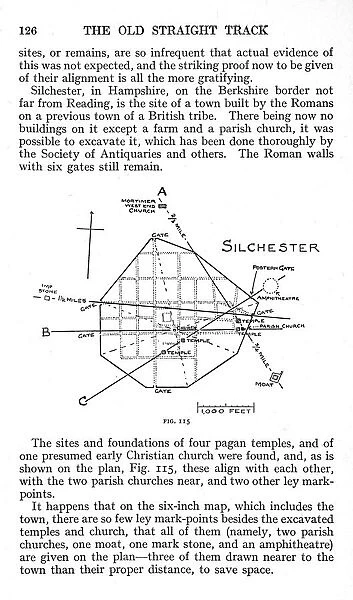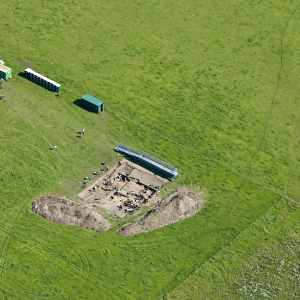Cushion : Ley lines: Silchester
![]()

Home Decor from Mary Evans Picture Library
Ley lines: Silchester
A page from the book The Old Straight Track by Alfred Watkins, with an illustration showing ley lines at Silchester.
1925
Mary Evans Picture Library makes available wonderful images created for people to enjoy over the centuries
Media ID 14405856
© Mary Evans Picture Library
Cushion
Refresh your home decor with a beautiful full photo 16"x16" (40x40cm) cushion, complete with cushion pad insert. Printed on both sides and made from 100% polyester with a zipper on the bottom back edge of the cushion cover. Care Instructions: Warm machine wash, do not bleach, do not tumble dry. Warm iron inside out. Do not dry clean.
Accessorise your space with decorative, soft cushions
Estimated Product Size is 40cm x 40cm (15.7" x 15.7")
These are individually made so all sizes are approximate
Artwork printed orientated as per the preview above, with landscape (horizontal) or portrait (vertical) orientation to match the source image.
EDITORS COMMENTS
A Visionary Landscape: Ley Lines at Silchester as Depicted in Alfred Watkins' "The Old Straight Track" (1925) In the intriguing world of ancient mysteries and arcane knowledge, few theories have captivated the imagination of scholars and enthusiasts alike quite like that of ley lines. First introduced to the public in 1925 by Alfred Watkins in his groundbreaking book, "The Old Straight Track," this enigmatic concept posits the existence of a vast, interconnected network of ancient alignments, stretching across the British Isles and beyond. These straight lines, believed to be the remnants of prehistoric sacred sites and ancient trackways, have been the subject of much debate and fascination for nearly a century. This evocative image, taken from Alfred Watkins' seminal work, illustrates the intriguing ley line alignments at the ancient Roman town of Silchester. Established around 70 AD, Silchester is an intriguing blend of Roman and pre-Roman influences, making it an ideal location for the study of ley lines. In this photograph, we see the town's ancient walls, intersected by several straight lines, each one potentially representing an ancient trackway or sacred alignment. Watkins, a self-taught antiquarian, spent years traveling the British countryside, meticulously documenting and mapping these lines. He believed that these alignments held deep spiritual significance and were used by our ancient ancestors as a means of connecting sacred sites and communing with the divine. The discovery of these lines, he argued, could offer valuable insights into the beliefs and practices of our distant past. Today, the study of ley lines continues to captivate researchers and enthusiasts, who seek to unravel the mysteries of our ancient past. This image, a testament to the visionary work of Alfred Watkins, serves as a reminder of the enduring allure of the unknown and the power of human curiosity in uncovering the secrets of our world.
MADE IN AUSTRALIA
Safe Shipping with 30 Day Money Back Guarantee
FREE PERSONALISATION*
We are proud to offer a range of customisation features including Personalised Captions, Color Filters and Picture Zoom Tools
SECURE PAYMENTS
We happily accept a wide range of payment options so you can pay for the things you need in the way that is most convenient for you
* Options may vary by product and licensing agreement. Zoomed Pictures can be adjusted in the Cart.




